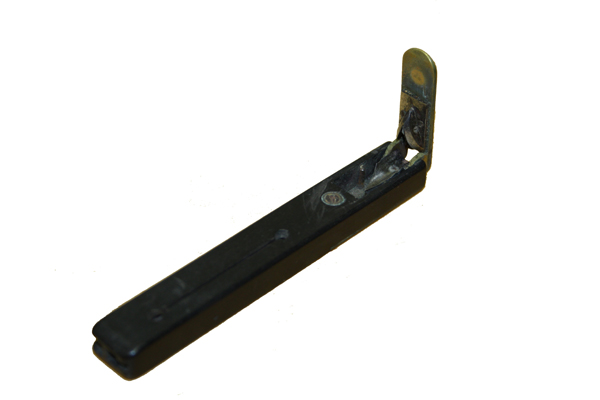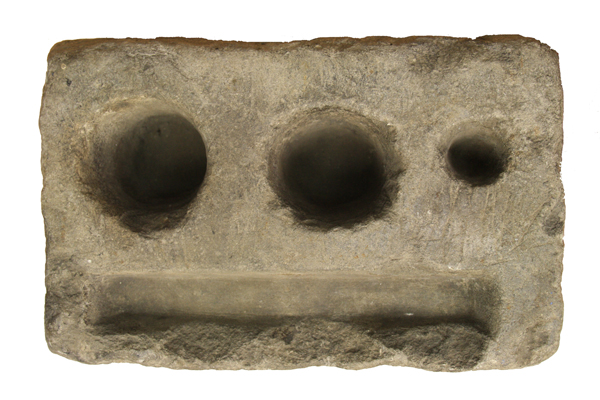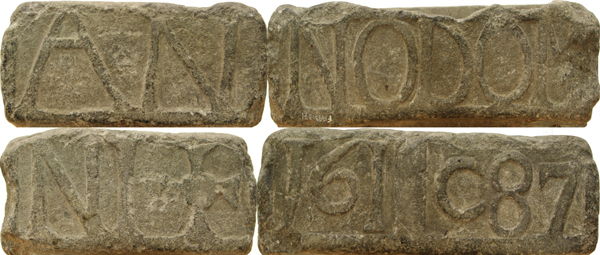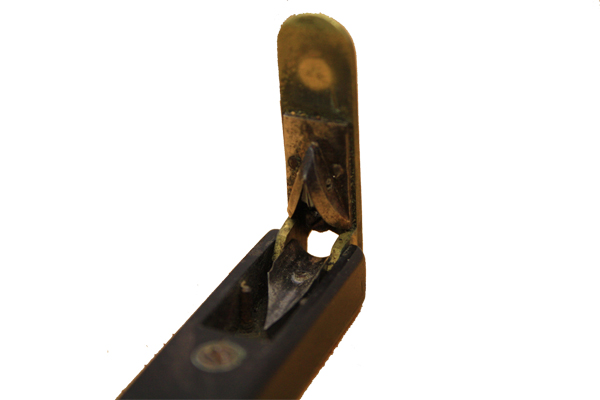c. 18th century
Writing Implements
A stone inkwell and quill pen cutter from the NMI’s Folklife collection.
By Noel CampbellDescription
This late seventeenth century inkwell (F:1993.371) was carved from a single piece of stone. The top has three wells of differing size as well as an oblong depression to hold a quill pen. The inkwell rests on four legs and has inscribed along its sides ‘ANNO DOMINI + 16 IC 87’. The words ‘anno domini’ and the year ‘1687’ and initials ‘IC’ are separated by a cross. The initials ‘IC’ are possibly those of the inkwell’s owner. This inkwell measures 20.5cm wide x 13cm long x 10cm high.

This early nineteenth century quill pen cutting tool (F:1951.208) has an ebony handle and consists of a cutter for cutting and splitting the quill point and, at the other end, it originally had a retractable blade for preparing the quill. This cutter is 10cm long and 1.5cm wide.
Writing during the Long Eighteenth Century (1688-1815)
Paper & Ink
By the end of the seventeenth century, paper was made largely from old white rags that were mashed with water and pulped by a rag-engine. The resulting pulp was spread evenly on a meshed wooden frame known as a deckle. The water would rain through the mesh leaving a coarse sheet of paper. The sheet was then pressed and dried, possibly several times, before being coated with a substance to prepare the surface to take ink. Improvements in bleaching and fibre extraction meant wood pulp made up for the shortage of rags by the nineteenth century. Inks at this time consisted of a pigment, an adhesive and water such as a soot, glue, and water combination.


Quill Pens
The quill pen (from penna, Latin for a feather) was first used in the fifth century. A quill was the primary flight-feather from the wing of a large bird, usually that of a goose. The feather was cleaned, dried and de-barbed before being heated to strengthen it. Finally, a tip was cut at the top. The process of writing was laborious as only a few marks could be made before the quill had to be dipped in the ink again. Quill pens also required regular trimming to renew the tip. Despite this, quills survived in use until the 1800s when the steel tipped pens became more commonly used. The quill pen cutter was the forerunner of the later penknife.

How did the National Museum of Ireland-Country Life acquire these objects?
The stone inkwell was originally held in the NMI’s Irish Antiquities Division, Kildare Street, Dublin but was transferred to Irish Folklife in 1993, after which it was housed in the NMI’s stores in Daingean, Co. Offaly. It was then moved to its current home in Turlough Park, Co. Mayo when the NMI-Country Life opened in 2001. The quill cutting tool was donated to the NMI in 1951 by a resident of Phibsborough, Co. Dublin. Both objects are held in the reserve collection and are not on public display.
Learn More
McGovern, Una, 2008. Lost Crafts; Rediscovering Traditional Skills, Edinburgh: Chambers Harrap Publishers Ltd.
Mell, George, 1980. Writing Antiques, Buckinghamshire: Shire Publications Ltd.
Pines, Charles C., 1931. 'The Story of Ink', The American Journal of Police Science, Vol.2, No.4, pp.290-301
https://scheong.wordpress.com/2009/11/04/the-history-of-writing-instruments-pt-i/ (for history of writing)
http://www.theweek.co.uk/innovation-at-work/63310/the-history-of-ink (for history of ink)
Location:
Writing Implements is located at:
In Storage
Previous artefact:
Two Tau Croziers: Coptic or Armenian?
